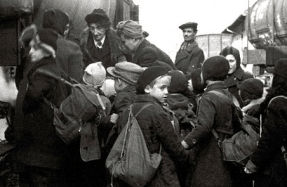THE HISTORY OF WEREWOLVES

The werewolf as we know it today in fantasy and science fiction novels, films and TV shows has a significant and extensive history. Cultures across the world have incorporated the beast into their mythology, folklore and literature, creating a historical tradition that is often lost or forgotten in the face of the CGI werewolf of the modern era. The very first werewolf in literature actually stretches as far back as literature goes, to the Epic Of Gilgamesh, which is the oldest surviving text in history, dated around 2100 BCE. This werewolf is a very small part of a larger story, courtesy of the goddess Ishtar, who transforms a humble, pious shepherd who sacrifices goats in worship of her. However, the single reference in this poem signifies to scholars of literary history that a larger tradition existed, integrated into the stories and lore of the people.
ANCIENT ORIGINS
When Greek and Roman literature adopted the werewolf tradition, it was across numerous genres: ethnographic travel texts, philosophical musings and astrological poetry. Initially, the belief was localised to the Neurian people, who lived around modern north-western Ukraine and south of Belarus. The first account of the Neurian werewolf peoples was recorded by Greek historian, Herodotus, writing in the fifth century BCE, in a work entitled The Histories. While Herodotus is renowned for including wild tales in his historical writing, in even he admitted: “I do not believe this story, yet nevertheless they tell it, and even swear it to be true.”
You’re reading a preview, subscribe to read more.
Start your free 30 days





